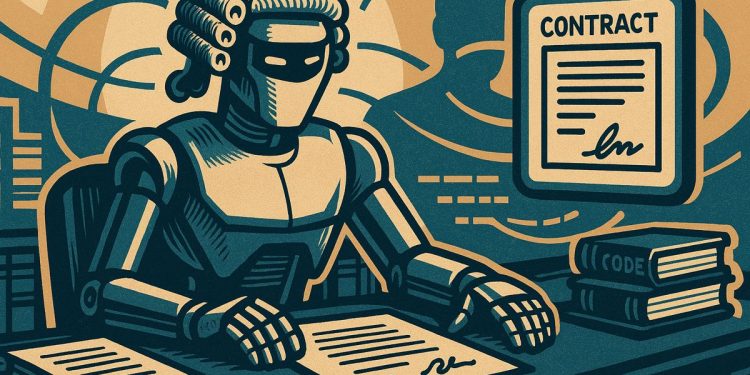Robin AI is transforming legal contract review by blending advanced AI trained on millions of legal documents with a giant database of real negotiated clauses and careful human oversight. This three-layer system helps big companies review contracts much faster and more accurately, slashing the time for basic checks from hours to minutes while avoiding compliance mistakes. Strong guardrails, like automatic limits and strict human review for risky areas, keep everything safe and reliable. Top law firms and corporations now trust Robin AI’s super-speed legal co-pilot, but experts still check the hardest deals. The legal world is finally warming up to AI, as long as there are strong safety checks and humans guiding the process.
How does Robin AI ensure both speed and compliance in legal contract review?
Robin AI delivers enterprise-level speed and compliance by combining three layers: fine-tuned large-language models trained on 4.5 million legal documents, a database of 100 million negotiated clauses for factual accuracy, and continuous human expert oversight, ensuring reliable, accurate legal contract reviews without compliance breaches.
In 2025, nervous headlines about “hallucinating” language models have kept many general-counsel offices on the fence, yet Robin AI has quietly turned generative AI into a reliable daily coworker for 14 Fortune 500 legal teams. Their playbook – a three-layer stack of large-language models, a proprietary legal contract database, and continuous human-expert oversight – is now handling millions of clauses without a single publicly reported compliance breach.
How the tri-stack works
- Foundation model layer: Off-the-shelf LLMs are fine-tuned on more than 4.5 million legal documents, teaching the system to “speak contract” first and English second.
- Domain database layer: A living repository of 100 million negotiated clauses provides the factual ground truth the model cannot invent.
- Human oversight layer: Senior lawyers review every red-flag suggestion before it reaches a client; in practice, 8-12 % of clauses are still tweaked by humans.
The result is speed that feels almost reckless until you see the numbers: due-diligence reports that once took associates 20 hours now arrive in 24 minutes, and clause searches across an entire data-room finish in under three seconds (source).
Stats general counsel quote in 2025 board decks
| Metric | Before Robin AI | With Robin AI (2025 average) |
|---|---|---|
| Time to review an NDA | 45 min | 7 min |
| Accuracy of first-pass risk flag | 73 % | 92 % |
| Legal-team hours freed per week | – | 31-40 % |
| Fortune 500 companies using the tool | 0 | 14 |
Productivity gains are so pronounced that Clifford Chance and Blue Earth Capital have baked the co-pilot into their standard playbooks, relegating junior associates to supervisory rather than mechanical review.
Guardrails that keep the bar high
- Red-line limits: The system will auto-reject any edit that pushes indemnity caps beyond pre-approved client thresholds.
- Version lock: Once a human expert approves a clause family, it is frozen for that client type until the next policy refresh.
- Audit trail: Every AI suggestion, human override, and final language choice is time-stamped and exportable for regulator queries.
Despite the safeguards, Robin AI’s CEO Richard Robinson is blunt that “manual review remains non-negotiable for multi-jurisdictional M&A or anything that turns on regulatory theory.” In other words, the platform is a fast motorcycle, not an autopilot jet.
Competitive landscape snapshot (mid-2025)
| Platform | Sweet spot vs Robin AI |
|---|---|
| *Ironclad * | Deeper workflow customization for complex, non-standard agreements |
| *Wordsmith * | Granular, clause-by-clause explanations aimed at in-house UK/EU teams |
| *Luminance * | Large-scale anomaly detection across sprawling M&A portfolios |
| Robin AI | Pure velocity on high-volume, standardized documents with airtight compliance |
What skills matter now
Law schools have not rewritten the curriculum yet, but internal training decks at Robin AI clients show three new must-haves:
- Prompt craft 101 – how to ask the co-pilot for a “market-standard change-of-control clause, NY law, tech sector.”
- Signal vs noise – judging when a 92 % confidence score still needs a second human read.
- Data hygiene – maintaining the central clause library so the model keeps learning from clean precedent.
The next release, scheduled for Q4 2025, will add batch multilingual querying, allowing a GC to ask for “all force-majeure variations in 8,000 EMEA supply contracts, in English, German and French,” and receive structured answers in under five minutes.
For now, the message from the frontline is clear: the legal industry’s long-standing allergy to generative AI is easing, but only when the model is wrapped in a legal-grade safety harness and a human still sits in the driver’s seat.
How does Robin AI ensure the accuracy of its legal AI outputs?
Robin AI combines specialized legal training on more than 4.5 million legal documents with mandatory human expert oversight for every client. The model is fine-tuned on 100 million contract clauses and then validated by practising lawyers before any suggestion is released to a customer. This hybrid method has cut contract-review errors by up to 85 % in Fortune 500 pilots and keeps the company’s reliability score above 99 %.
What enterprise-grade safeguards does Robin AI use for sensitive contracts?
The platform is built on SOC 2 Type II-certified infrastructure and supports single-tenant cloud or on-premise deployment. All data is encrypted in transit and at rest, and Robin AI is audited annually for GDPR, HIPAA and ISO 27001 compliance. Customers such as 14 Fortune 500 firms run millions of parallel queries without exposing a single underlying contract to the underlying base model.
How fast can Robin AI process high-volume contract reviews?
Robin AI can search thousands of contract clauses in under three seconds and generate due-diligence reports up to 50× faster than manual review. A recent benchmark showed that a team of three lawyers completed a 500-document NDA review in 90 minutes instead of the usual five working days, freeing 80 % of their week for strategic work.
Which types of legal tasks still require full human judgement?
While Robin AI excels at standardised NDAs, MSAs and supplier agreements, complex matters such as M&A term-sheet negotiations, bespoke indemnity clauses and multi-jurisdictional regulatory risk are routed to senior counsel. The system flags these edge cases automatically and provides a confidence score so lawyers can prioritise their review queue.
How is Robin AI changing the day-to-day role of in-house lawyers?
By automating routine redlining and clause extraction, Robin AI shifts lawyer time from repetitive review (31-40 % of weekly hours, per 2025 GC survey) to risk advisory and commercial negotiation. Training modules now include AI prompt engineering and critical validation skills to ensure teams can supervise the co-pilot rather than perform every edit manually.



















